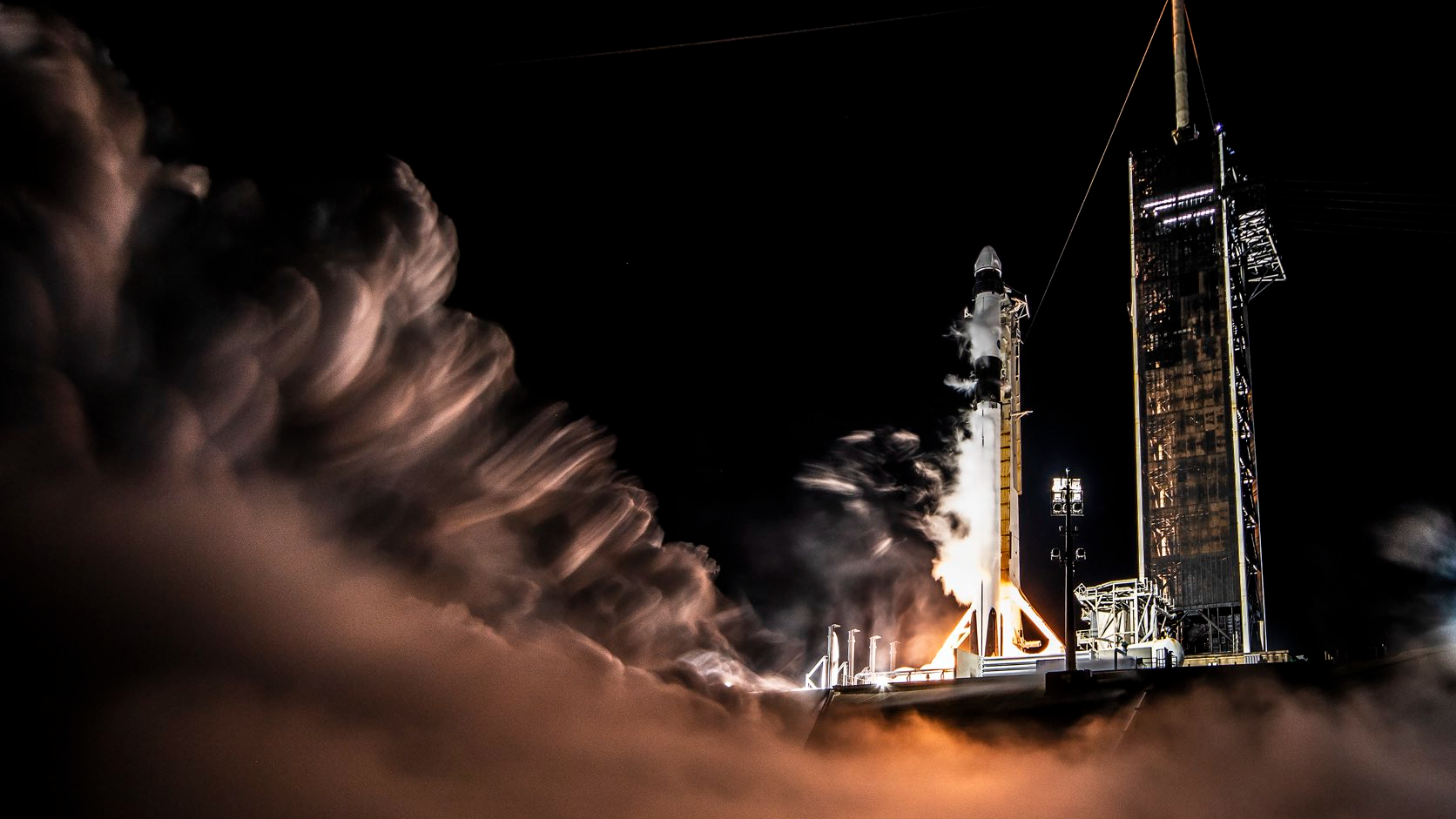
SpaceX just notched another milestone ahead of its next astronaut mission.
The company announced early Tuesday morning (Feb. 27) that it had conducted a static fire test with the Falcon 9 rocket that will launch the Crew-8 mission to the International Space Station (ISS) for NASA. Static fires are common prelaunch trials in which a rocket's engines are ignited briefly while the vehicle is anchored to the pad.
Crew-8 is scheduled to launch from Pad 39A at NASA's Kennedy Space Center in Florida on Saturday (March 2) at 11:16 p.m. EST (0416 GMT on March 3), weather permitting. You can watch the action live here at Space.com.
Related: 8 ways SpaceX has transformed spaceflight
pic.twitter.com/X242rGHVM7February 27, 2024
SpaceX founder and CEO Elon Musk posted a photo of the static fire on X on Tuesday. The company did so as well via its official X account.
Crew-8 will send four astronauts to the ISS for a roughly six-month stay: NASA's Matthew Dominick (the mission's commander), Michael Barrett (pilot) and Jeannette Epps (mission specialist), and Alexander Grebenkin (mission specialist) of Russia's space agency, Roscosmos.
Crew-8 will be the first mission for this particular Falcon 9. But the Crew Dragon capsule that will carry the four spaceflyers is a veteran. The vehicle, called Endeavour, already has four crewed ISS missions under its belt, including 2020's Demo-2, the first astronaut mission that SpaceX ever flew.
Get the Space.com Newsletter
Breaking space news, the latest updates on rocket launches, skywatching events and more!
Editor's note: This story was updated at 1:20 a.m. ET on Feb. 29 with news of the launch delay to March 2.
Join our Space Forums to keep talking space on the latest missions, night sky and more! And if you have a news tip, correction or comment, let us know at: community@space.com.

Michael Wall is a Senior Space Writer with Space.com and joined the team in 2010. He primarily covers exoplanets, spaceflight and military space, but has been known to dabble in the space art beat. His book about the search for alien life, "Out There," was published on Nov. 13, 2018. Before becoming a science writer, Michael worked as a herpetologist and wildlife biologist. He has a Ph.D. in evolutionary biology from the University of Sydney, Australia, a bachelor's degree from the University of Arizona, and a graduate certificate in science writing from the University of California, Santa Cruz. To find out what his latest project is, you can follow Michael on Twitter.








